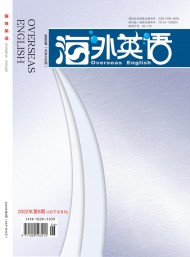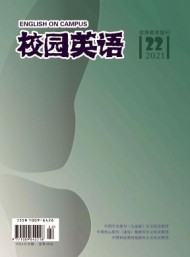英语教案范文10篇
时间:2023-04-04 03:53:54

英语教案范文篇1
n/nnk/N/ng/Ng/ng/Nk/nknc
词汇学习
掌握
L41dateseasonwritedownJanuaryMarchJuneJulyAugustDecemberspringlast
L42weatherwarmcomeoutheavilycropreallysnowsnowmanalltheyearround
L44truenearlyunlikeopposite
语法学习
1.学会序数词,并用于“年月日的表达。”
2.反意问句的基本用法。
3.介词in,on和at与时间的搭配和一些特殊用法。
教学生一个顺口溜,也许对对记忆介词的用法有些帮助。
年用in月用in星期也用in
有年有月还用in
如果遇到年月日,千万记住要用on。
日常交际用语
Whichisthesecond/fourth/monthoftheyear?February/April.
Whenisspring/summer/autumn/winter/inChina?ItlastsfromMarchtoMay.
Whatisthedatetoday?It’sDecemberthe20th,2001.
What’stheweatherlikeinspring/summer/autumn/winterinyourhometown?It’sverywarmandwindy.
Thedaysgetwarmer,andthenightsgetlonger.
Whichseasondoyoulikebest?Summer.
Why?BecauseIcanswimintheriver.
教学建议
本单元主要是围绕两个话题开展教学活动。即“日期”和“季节”。主要的语言项目是序数词,月份的名称和反意疑问句及回答。
在41课中,12个月份和四季的英语名称,1—31的序数词,一般现在时和一般过去时的有关日期的提问及回答都是比较难掌握的。第42课是阅读课。讲的是杭州的一中学生王伟给他的加拿大朋友的一封信。信中描述了杭州的四季。文章前的三个讨论题可让学生自由发挥,开展讨论。第43颗主要是学会运用反意疑问句。第三部分,看图说话可供条件极好的班级使用。这一部分主要练习四季特征的描述。可锻炼学生的语言组织能力和表达能力。
第44课为综合实践课。提供了语音,听力,说话和阅读四个方面的材料。其中说话部分要求学生真实地回答问题,复习了反意问句及有关问句,并给学生提供了自由发挥的空间。阅读部分通过两个国家的气候对比叙述和文后的两幅图画,给学生们谈论气候提供了素材。
重难点分析
本单元的重点是学习并掌握反意疑问句的用法和介词in,on,at的用法。难点是反意疑问句的两种不同形式及答语。
1.表示季节、月份、日期、天气状况的词,能很流利地运用这些词谈论季节和天气状况。
2.日期的提问和回答。
3.有关BE动词和行为动词最基本的反意问句及回答。
4.介词in,on以及at和时间的搭配。
重点词组和短语分析
thanksb.forsth.为某事感谢某人
asksb.aboutsth.就某事询问某人
comeout(花)开;发(芽);出来;出现
rainheavily下大雨
abusyseason繁忙的季节
harvesttime收获季节
helpsb.withsth.在某事上帮助某人
workonthefarm在农场工作
makeasnowman做雪人
alltheyeararound一年四季
atthistimeoftheyear一年中的这个时候
inmuchofChina在中国的这个时候
lastfrom...to...从……延续到……
goonto...延续到……
warmclothes暖和的衣服
thebesttime最好的时节
日常交际分析
本单元的交际用语主要是关于天气状况和季节的,现将有关这两方面的词汇和句型总结如下:
1.词汇
1)spring,summer,autumn,winter
2)January,February,March,April,May,June,July,August,September,October,November,December
2.句型和短语
1)Itis...inwinter/summer....
2)Itis/lastsfrom...to....
3)goonto...
4)comeafter
5)It/Theweatheris...,isntit?
6)atabadtimeofyear
7)atthistime/thattimeofyear
8)bedifferentfrom
9)Whatstheweatherlike...?
词汇教学建议
以旧代新在学习12个月份的时候,先让学生复习已学过的几个月份。用下面的表格引出以下新单词:
_____________February_____________
___April________May______________
________________________September_
__October__________________________
也可采用以四季划分的方式排列12个月份。
1.符合发音规律的单词
三月、六月和七月建议老师先让学生们仔细听三个单词的读音,推测出它们是什么字母。必要时可写出音标。相信学生们是可以拼出单词的。也可写出单词,让学生自己读。
2.可用迁移的方法教单词
autumnAugustFebruaryJanuarySeptemberNovemberDecember
3.教学生月份的简写
月份的简写一般是前三个字母。如:JanuaryJan.FebruaryFeb.
AprilApr.等。
用挂历让学生看月份的缩写。
语法教学建议
1.利用值日生报告学习日期的表达。
值日生报告制度是老师们常用的训练学生口语的方式。此方法简单易行,深受老师和同学们的喜爱。学习本单元大约在一月份,可利用这一段时间反复复习日期的表达。重点是两类问题;Whatdayisittoday?Whatdaywasyesterday?和Whatisthedatetoday?Whatwasthedateyesterday?并以完全和缩略两种形式,把每天的日期都写在黑板上,如January20th,2003,Jan.20th,2003,也可让值日生自己写,以加深学生们的印象。
2.利用常见句型,练习反意疑问句。
先让学生观察一些句子,老师可事先用投影写好一些句子,条件较好的班级也可由老师口头朗读这些句子,如:
It’sfinetoday,isn’tit?Yes,itis.
You’refromJapan,aren’tyou?Yes,Iam.
让学生总结反意问句的构成,以及它的回答方式。
日常交际用语建议
1.让学生相互询问生日,朋友的生日、父母的生日、值日生报告等,练习年月日的表达。
教学完日期的表达方法后,应要求值日生每天进行这样的问答:What’sthedatetoday?Whatwasthedateyesterday?等。这是复习巩固日期表达法的最好的途径。
2.通过编对话、描述等练习四季天气的表达。
可利用书上的彩图,教师平时要从画报上选择一些图片,做为补充。这项工作也可发动学生帮助完成。还可利用南北半球的气候差异做比较将会引起学生的兴趣。指着中国和澳大利亚的地图让学生自己根据教材内容进行总结其差异及各自季节特点。
Whichmonthisthecoldest/hottestinChina/Australia?
CanAustralianshavesnowonNewYear’sDay?
反意疑问句
反意疑问句(TheDisjunctiveQuestion)又叫附加疑问句,它表示提问的人对所提的事有一定的看法,但没有把握,需要对方来证实。反意疑问句由两部分组成:前一部分是一个陈述句,表示提问者的看法。后一部分是一个简短的附加疑问句,对前部分陈述句中所陈述的内容提出疑问。反意疑问句后半部分的附加疑问句应与前部分的陈述句在人称以及时态上保持一致。反意疑问句的基本结构有以下两种:
1.陈述部分肯定式+疑问部分否定式?
2.陈述部分否定式+疑问部分肯定式?
例:Theyworkhard,don’tthey?
Shewasillyesterday,wasn’tshe?
Youdidn’tgo,didyou?
Hecan’trideabike,canhe?
大多数反意疑问句的结构是和上面所说的一样,但也有些特殊的反意疑问句:
一、当陈述部分的主语是I,everyone,everything,nobody等词时,后面的附加疑问句一般这样来表示:
1.Iamastudent,aren’tI?
2.Everyoneisintheclassroom,aren’tthey?
3.Everythingbeginstogrowinspring,doesn’tit?
4.Nobodywillgo,willthey?
二、当陈述部分有never,seldom,hardly,few,little等含有否定意义的词语时,附加疑问句多用肯定式。如:
1.Hehasneverbeento(去过、到过)Nanchang,hashe?
2.Therearefewapplesinthebasket,arethere?
3.Hecanhardlyswim,canhe?
4.Theyseldomcomelate,dothey?
三、当陈述部分是Ithink加宾语从句时,后面的附加疑问句应和宾语从句中的人称和时态保持一致。如:
Ithinkchickenscanswim,can’tthey?
IthinkLucyisagoodgirl,isn’tshe?
四、当陈述部分有hadbetter时,附加疑问句应用hadn’t开头。如:
You’dbettergetupearly,hadn’tyou?
五、当陈述部分是祈使句时,附加疑问句部分有不同的形式,并多使用肯定来表示有礼貌的请求。如:
Let’sgooutforawalk,shallwe?
注意:Letusgooutforawalk,willyou?
Turnontheradio,willyou?
六、反意疑问句的回答用yes或no,但是当陈述部分是否定式,附加疑问句部分是肯定句时,答语中使用yes或no则应根据事实来决定,事实是肯定的用yes,事实是否定的就用no。如:
Theydon’tworkhard,dothey?他们工作不太努力,是吗?
简略回答:
Yes,theydo.不,他们工作努力。
No,theydon’t.是的,他们工作不努力。
另外,朗读反意疑问句时要注意:前面的陈述部分通常用降调朗读,而后面的附加疑问句部分则要根据说话人的口气来定:如果是很客气地要求对方回答,就用升调朗读,如果只表示一种语气上的强调,则用降调朗读。
分析in,on和at的用法
表示年、月、季节、星期等用in:inayear/season/month/week/themorning/theafternoon/theevening/
Theyhavefourclassesinthemorning,andtheyhavenoclassesintheafternoon.
表示日、日期、某一天的早晨、下午等用on:onaday/date,onSunday/SaturdayonWednesdaymorning,ontheeveningofMarch7th,2002
ItrainedheavilyontheeveningofJune20th.
表示几点、某个时刻用at:ateight/two/halfpastone/atthistimeyesterday/atthistimeofyear/atthattime/atpresent
HewaswatchingTVatthistimeyesterday.
零介词:thisyear,lasttime,nextmonth,thenextday,alltheyearround,alltheday,thewholeday等。
TheirfamilyaregoingtoflytoLondonnextmonth.
At还有一些特殊的用法,如:atwork,attable,athand,atonce,atlast,athome,atthesametime
atonce立刻
Hisfathertelephonedhimtoreturnhomeatonce.
athand不远,快到
Autumnisnearlyover.Winterisathand.
atmost最多
Helooksveryold,butinfactheisfortyatmost.
日期的表达与询问
日期表达
由于书写习惯的不同,英语里日期的写法也有差异。美国人习惯先说日期后说月份,英国人则习惯先说月份后说日期,但年份均是放在最后。书写日期时,可用阿拉伯数字表示,也可用序数词的缩略式(1st、2nd、4th)表示,但是年份只能用阿拉伯数字。如1999年3月2日可表达为2(nd)March,1999(读作thesecondofMarch,nineteenninety-nine)或March2(nd),1999(读作Marchthesecond,nineteenninety-nine)。
日期询问
1.几月几日的询问方法
a.What’sthedate(today)?
b.Whatwasthedateyesterday(lastMonday…)?
其回答方式是:It’s(Itwas)…
2.星期几的询问方法
a.Whatdayistoday(tomorrow)?
b.Whatdayisittoday(tomorrow)?
c.Whatdayoftheweekisittoday?
这种句子中可用today,tomorrow等名词作主语,也可用代词it作主语。其回答方式是:It’s(Itwas)…
对话实例
A:Whatdayistoday?
B:It’sSunday.
A:Whatwasthedateyesterday?
B:ItwasSeptember10th,Teachers’Day.
Lesson41教学设计方案
教学目标
学会12个月份、四季和顺数词的说法。学会表达日期。
教学用具
投影仪、录影机以及挂历和媒体设备等。
教学步骤
Step1Revision
老师可先做DutyReport,除规定的内容外,必须让值日生回答以下几个问题:Whatdayisittoday/tomorrow?Whatdaywasityesterday?Whatisthedatetoday/tomorrow?Whatwasthedateyesterday?然后将答案(完全形式和缩略形式)写在黑板上,并让学生视听,初步了解英文日期的表达与中文顺序的不同。然后全班问学生几个问题:WhatdayisourNationalDay?October1st./Oct.1st.WhichmonthistheSpringFestivalin?UsuallyinFebruary.Who/Whosemother/WhosefatherwasborninFebruary/April/May/September/October?最好先找几个学生是在已学过的这几个月份出生的,或他们的父母是在这几个月份出生的,这样可先复习学过的几个月份。按季节做以下表格。先填出学过的季节和月份。学完生词后填满表格。
Step2Presentation
Learnandpractise
Todaywe’llstudythefirstmonth,thethirdmonth,thesixthmonth,theseventhmonth,theeighthmonth,andtheeleventhmonthoftheyear.
以下单词符合发音规律,请同学们自己拼读,应该不会有太大的困难。
MarchJuneJuly
以下单词可迁移
autumnAugustFebruaryJanuarySeptemberNovember,December
pastlastsingspringseaseason先让学生根据旧单词读出划线部分,然后再读整个单词。
这些单词大多数拼读较复杂,可让学生把这些单词先在本上抄一遍。
然后让学生练习自己的生日,每个人说出自己的生日。可两人互相问答,练习说自己的生日,父母的生日,朋友的生日等。
最后教师问学生:
T:Howmanymonthsarethereinayear?
Students:Therearetwelvemonthsinayear.
T:Whatarethey?CanyousaytheminEnglish?
Ss:TheyareJanuary,February,March,April,May,June,July,August,September,October,NovemberandDecember.
让学生填满表格。
Askandanswer
T:Therearefourseasonsinayear.Theyarespring,slimmer,autumnandwinter.Doyouknowwhenspring/summer/autumn/winterisinChina?
让学生根据上面填写的表格进行对话练习:
S1:WhenisspringinChina?
S2:It’sfromMarchtoMay.
S1:WhenissummerinChina?
S2:It’sformJunetoAugust.
……
Notes:
1.Wesay“autumn”inBritain,andsay“fall”inAmericanEnglish.
2.Whenwesayfourseasons,weshouldusepreposition“in”——inspring,insummer,inautumn/fall,inwinter.
3.Preposition“on”
OnMonday,OnTuesday,OnWednesday,OnThursday,OnFriday,OnSaturday,OnSunday
4.Preposition“at”
at6oclock,at120clock,atthistimeofyear.
5.Preposition“in”
inthemorning,intheafternoon,intheevening.
然后让学生自己完成课本上第2部分的练习。
Learnandpractise
T:Doyourememberthecardinalnumbersthatwehavelearntbefore?
Let’scountthemfromonetothirty-one.OK!Couldyoupleasewritethemdowninyournote-books?Whowantstowritethecardinalnumbersondueblackboard?
要一个学生来写下以前所学的数词:
one,two,three,four,five,six,seven,eight,nine,ten,eleven,twelve…twenty-one…thirtythirty-one
然后问这个学生是否能把这些数词变成序数词:
first,second,third,fourth,fifth,sixth,seventh,eighth,ninth,tenth,eleventh,twelfth,…twenty-first…thirtieth,thirty-first
让学生注意黑体字显示的特殊变化。
Step3Practice
T:Whichisthefirstmonthoftheyear?
Ss:Januaryisthefirstmonthoftheyear.
T:Showthemtheanswers
1.Januaryisthefirstmonthoftheyear.
2.Februaryisthesecondmonthoftheyear.
3.Marchisthethirdmonthoftheyear.
4.Aprilisthefourthmonthoftheyear.
5.Mayisthefifthmonthoftheyear.
6.Juneisthesixthmonthoftheyear.
7.Julyistheseventhmonthoftheyear.
8.Augustistheeighthmonthoftheyear.
9.Septemberistheninthmonthoftheyear.
10.Octoberisthetenthmonthoftheyear.
11.Novemberistheeleventhmonthoftheyear.
12.Decemberisthetwelfthmonthoftheyear.
用投影片练习以下日期:
两千零三年一月一日NewYear’sDay日期Januarythefirst,twothousandandthree/Jan.1st,2003,星期Wednesday
二月SpringFestival日期星期
三月八日Women’sDay日期星期
五月一日LabourDay日期星期
六月一日Children’sDay日期星期
七月一日BirthdayoftheParty日期星期
八月一日建军节日期星期
九月十日Teachers’Day日期星期
十二月二十五日ChristmasDay日期星期
然后让学生练习关于询问最近几天的日期(pairwork),
S1:Whatdayisittoday?
S2:It’sNovember3rd,2002/Novemberthethird,twothousandandtwo.
S1:Whatdaywasityesterday?
S2:ItwasNovember2nd,2002.
……
运用下面句型进行练习:
Whatdayisittoday/tomorrow?Whatdaywasityesterday?Whatthedatetoday/tomorrow?Whatwasthedateyesterday?Whenisyourbirthday?Whenisyourfather’sbirthday/yourmother’sbirthday/yourfriend’sbirthday?
让学生统计本组的,生日,看看那一个月份过生日的最多。
Step4Consolidation
编一段小短文,假定我们班一月份有五个同学过生日,说出这五个同学的生日,我们准备给他们集体过生日,要开一个生日Party,定一个日期。并向全班宣布时间、地点。
Step5Exercisesinclass
Fillingintheblanks:(keysinthefollowingbrackets)
1.NewYearisonJanuary,_________(thefirst)
2.Maythefirstis_________(LaborDay)
3.Weloveourteachers,wesayHappyTeachersdayon_________(September,thetenth)
4.Flowerscomeoutin________(spring)
5.Oursecondschool-termlastsfrom____to____.(FebruarytoJuly).
6.Junethefirstis_________.(Children’sDay).
7.______isourNationalDay.(October,thefirst)
8.Wecanmakeasnowmanin_________(winter)
9.Septemberisthe_________monthofyear.(ninth)
10.________,thetwenty-fifthisChristmasDay.(December).
Homework
1.Recitethenumbers,seasonsandmonths.
2.MakefiveEnglishsentencesaccordingtothislesson.
3.Doworkbook.
Thedesignoftheblackboard
Lesson42教学设计方案
教学目标
学会描述四季天气,信的基本写法。
教学用具
投影仪、录音机以及用过的外国的信封、信纸等。
教学步骤
Step1Revision
1.DutyReport:让值日生报告,包括以下问题:Whatdayisittoday/tomorrow?Whatdaywasityesterday?Whatisthedatetoday/tomorrow?Whatwasthedateyesterday?等,并问学生What’stheweatherliketoday?老师可自己回答It’sfine/cold.
2.Reviewthenamesof12monthsandfourseasons.
Step2Presentation
1.通过叙述四季教新单词。如能配合媒体效果会更好。老师可看着媒体描述四季,让学生们注意听。
Springisthefirstseasonoftheyear.Theweatherisverywarm.教warm,weather.Ilikespringbest.Everythingbeginstoturngreen.Flowerscomeout.Wecanwearbeautifulclothes,again.教comeout.Summeristhewarmestseasonoftheyear.Itoftenrains,sometimesquiteheavily,intheSouth.教heavily.Thecropsgrowveryquickly.教crop.Autumnisthebusyseasonoftheyear.Weoftenhelpthemwiththeirharvest.Wereallyenjoyworkingonthefarm.BecauseIlikeworkingbetterthanhavingclassesintheclassroom.教really.Winteristhecoldestoftheyear.Oldpeopledon’tlikeit,butchildrenlikeit.Becauseitsometimesnows,sometimesveryheavily.教snow.Childrencanmakeasnowman.教snowman.
引导学生讨论re-readingquestions。先找一两个较好的同学说一说,再找几个小组的学生代表在全班展示。
2.观察信的格式
信纸的右上角写什么,称呼用什么标点,落款写什么。
阅读P.12,P.69和P.153三封信。让学生总结写信应有些什么套话。
老师可总结一封信的格式,用你自己学校的地址。
观察SBP132信封的写法。也可给让学生看一个真正的用过的信封、信纸。
让学生听录音,并跟读。
Step3Practise
1)让学生快速阅读这封信,Saysomethingabouttheweatherinspring,summer,autumnandwinterinHangzhou.
2)SaysomethingaboutthefourseasonsinBeijing.可以小组讨论后,代表发言,也可个人发言。
1.TherearefourseasonsinBeijing.
2.It’swindyinspring.It’swarminautumn.
It’shotinsummer.It’scoldinwinter.
3.Peopleliketohaveapicnicinspring.
Theyliketoswiminsummer.
Theyliketogooutinginautumn.
Theyliketogoskiinginwinter.
Addition:Howmanykindsofsportsdoyouknow?
eg.running,skating,playingbasketball,playingfootball,playingvolleyball,thehighjump,thelongjump,relayrace.
3)做Workbook
Step4Exercisesinclass
T:LetthestudentsclosetheirEnglishbooksandfillinthemissingwordsaccordingtotheletter.Thenchecktheanswers.
___1__Helen,I___2___youarewell.Thankyou___3__yourlastletter.You__4___meabouttheweatherhereinChina.There__5__fourseasonsinayear___6__spring,__7__,autumnandwinter.
Ithinkspringisthe___8__seasonoftheyear.Theweather___9___warmer,andthedays___10__longer.___11__thefieldseverythingbeginsto___12__.Trees__13__green,andflowersstarttocome__14__.
Summer__15___afterspring.Itisthe__16__season.Itoftenreins.sometimesquite__17___Thecropsgrowveryquickly.Manypeoplelovethis__18__ofyear,__19__itisgoodfor___20__.Ioftengo___21__,sometimesina___22_nearmyhome,andsometimesina___23__.Ienjoyitvery___24__.
___25__isabusyseason.Thedaysget___26___andthenightsget__27Itistheharvesttime,andallfarmersare___28__.Often,wehelpthem_29_theharvest.__30__monthwehelpedthemwiththericeharvest.Wereallyenjoyed__31__onthefarm.
Thecoldestseasonoftheyeariswinter.Somepeople___32___likewinter,_33_Ilikeit.Sometimesitsnows,andthelandis___34__white.Thenwecanplayinthemow.Iliketo___35___snowmen.
Howmanyseasonsare__36___inyourcountry?I___37__itiscoldalltheyear__38__.Therearenotfourseasons,__39__there?
_____40___
WangWei.
Keys:1.Dear2.hope3.for4.asked5.are
6.here7.summer8.best9.gets10.get
es
16.waimest17.heavily18.time19.because20.sports
21.swimming22.lake23.river24.much25.Autumn
26.shorter27.longer28.busy29.with30.Last
31.woiking32.don’t33.but34.all35.make
36.there37.hear38.round39.are40.Yours
Step5Homework
1.Readtheletterfluently.
2.Makesentenceswiththeusefulexpressions.
3.TrytowriteashortEnglishletter.
假如Helen给你也写了一封信,让你谈谈你家乡的四季,请你回一封信。
Thedesignoftheblackboard
Lesson43-L44教学设计方案
(一课时或两课时)
教学目标
掌握语音;谈谈自己对四季的看法,说说自己最喜欢那个季节,并说明理由。
教学用具
录影机、媒体设备。
教学步骤
Step1Revision
四季和12个月份。
Step2Presentation
老师朗读这些句子,朗读两遍,重读动词及反意部分。
It’sfinetoday,isn’tit?Yes,itis.
You’refromJapan,aren’tyou?Yes,Iam.
Theyarewaiting,aren’tthey?No,theyaren’t.
He’samiddleschoolstudent,isn’the?Yes,heis.
Sheisathomenow,isn’tshe?No,sheisn’t.Sheisatschool.
ItwasSundayyesterday,wasn’tit?Yes,itwas.
JimknowsthewayAustraliansspeak,doesn’the?Yes,heis.
HanMeimeiknowsJimalot,doesn’tshe?
TheywerewatchingTVyesterdayevening,weren’tthey?Yes,theywere.
Youlikespringbest,don’tyou?No,Idon’t.Ilikesummer.
将这些句子用投影仪打出,让学生观察,并总结反意问句的构成,以及它的回答方式。
Step3Drill
然后可采用老师说主句部分,由学生练习缩略部分的方式练习。练熟后由学生说主句部分,老师说从句部分,直至练熟。也可在黑板上出一部分句子,写出主句部分,让学生写反意部分。目前只让学生练习前肯定后否定的反意问句,回答部分不必多花时间。
听录音,并跟读。
Step4Practisepairwork
联系Part2可让学生自由发挥,如两人谈谈北京的四季,和你家乡的季节,但主要练习反意问句及其回答。
教单词:truenearnearlylikeunlikeopposite
Step5Listenandrepeat
OpenyourbooksanddoExerciseOne,Lesson44
Payattentiontothesepronunciations.
Readthewordsagain.
T:Nowlet’sdoExerciseTwo.ListentothetapeandchoosethecorrectanswersonPage134.
Thenchecktheanswerstogether.
Step6Consolidation
1.看图并谈谈北京的四季。一个学生可重点谈一个季节。练习Lesson43Part3.
2.让学生编一个对话,谈谈自己所喜爱的季节。引出一个十分有用的句型:That’strue.
仿照Lesson44Part3.
A:Whichseasondoyoulikebest,spring,summer,autumnorwinter?
B:That’saneasyquestion.IthinkIlikespringbest.
A:Why?
B:Well,Iliketravelling.Youcandoalotofsightseeinginspring.Whataboutyou?
A:Canyouguess?
B:Youlikewinter,don’tyou?
A:Yes.Howdidyouguess?
B:Becauseyoulikeskiing.
A:That’strue,butIlikesummerbetterthanwinter.
B:Why?
A:BecauseIcanhavealongholidayinSummerthen.
3.ListenLesson44Part4Read.
把你听到的填写在下列表格中,对比中国,美国和澳大利亚。
Spring
Weather
Summer
Weather
Autumn
Weather
Winter
Weather
China
Mar—
May
Warm
England
America
Mar—
May
Australia
Keys
Spring
Weather
Summer
Weather
Autumn
Weather
Winter
Weather
China
Mar—
May
warm
short
June—
August
hot
Aug.—
Nov.
quitewarm
Dec.—
Feb.
verycold
England
Mar.--May
longerthaninChinaandUSA
Nottoohotortoocold
America
Mar—
May
AnearlythesameasChina.
Australia
Dec.—Feb.
TheseasonsareoppositeofChina.
June—Aug.
AskthestudentstolookatthetwopicturesinstudentsBookanddescribethepicturesintheirownwords.
LetthemtalkabouttheweatherinChina,inEngland,intheU.S.A.andinAustralia.
4.GooverCheckpoint11
A:Grammar
1.disjunctivequestions2.theprepositions:in,onandat
B:Usefulexpressions
1.turngreen/yellow/…2.thisyear/month/…3.thenextyear/month/…
4.bedifferentfrom5.Whatisthedatetoday?6.What’stheweatherlike?
Step7Exercisesinclass
Listeningpractice.
Listentoastoryandtrytoanswerthefollowingquestions.
Everybodytalksaboutweather.“Isn’titaniceday?”“Doyouthinkitwillrain?”Ithinkitsgoingtosnow.ThesearecommonwaysofstartingaconversationinEngland.
Manypeoplethinkthattheycantellwhattheweatherisgoingtobelike.Buttheyhardlyeveragreewitheachother.Onemanmaysay,“Doyouseeitiscloudyintheeast?It’sgoingtoraintomorrow.”Anothermanwillsay,“Yes,it’scloudyintheeast.We’regoingtohavefineweathertomorrow.”
Peopleoftenlookfortheweathertheywant.Whenfarmerneedswater,helooksforsomethingtotellhimselfthatitsgoingtorain.Whenpeopleplayinaparkonarainyday,theyaresurethattheweatherisgoingtobefinesoon.Theyevensiteatingtheirlunchwhileitrains.
Mostpeoplelistentowhattheweathermansaysontheradio.Buthedoesn’talwaystellthemwhattheywanttohear.Sometimeshemakesamistake,butheisstillrightmoreoftenthananyoneelse.
Questions.
1.HowdoEnglishpeoplestartaconversation?
2.Domanyofthemthinktheycantellwhattheweatherisgoingtobelike?
3.Whydotheyhardlyagreewitheachother?
4.Whatkindofweatherdopeoplethinkit’sgoingtobeiftheygoouttoplayinaparkintherain?
5.Whoisrightmoreoftenabouttheweather?
Keys:
1.Theyusuallytalkabouttheweather.
2.Yes,theydo.
3.Becauseeachofthemissosureofhimselfthatonlyheknowsabouttheweather.
4.Theythinkitsgoingtobefine.
5.Theweathermanis.
Step8Homework
1.MakeupanewdialogueaccordingtoExerciseThree.
2.WriteabouttheweatheroffourseasonsinChina.
3.Readthetextfluentlyandtrytoreciteit.
4.ReviewCheckpoint11andthewholeunit.
5.Gooverdisjunctivequestions.
BlackboardHandwriting
探究活动
12星座查询
在多媒体教室上这节课,可能效果更好。教给学生如何上网查资料。
每个人都有自己的星座,统计一下本班同学都属于哪个星座。提供给你一份星座的时间表,但不全,请你通过网上查一查,并填好表格。
中文名称
外文名称
日期
人物性格
水瓶座
January20th—February18th
loving,wise,intelligent
ARIES
March21st—April19th
金牛座
GEMINI
quick-minded,thoughtful
June22nd—July22nd
LEO
处女座
August23rd--September22nd
LIBRA
天蝎座
November22nd–December21st
hard-working,confident,patient
注意;此表格只是一种游戏和娱乐,仅供参考,千万不要迷信。
Keys:
中文名称
外文名称
日期
人物性格
水瓶座
AQUARIES
January20th—February18th
loving,wise,intelligent
双鱼座
PRSCES
February19th--March20th
open-minded,fondofart
白羊座
ARIES
March21st—April19th
helpful,straightforward
金牛座
TAURUS
April20th--May20th
intelligent,soft
双子座
GEMINI
May21st--June21st
quick-minded,thoughtful
巨蟹座
CANCER
June22nd—July22nd
kind,considerate
狮子座
LEO
July23rd--August22nd
reliable,abornleader
处女座
VIRGO
August23rd--September22nd
easytogetusedtonewthings,thirstforknowledge,curious
天平座
LIBRA
September23rd--October22nd
peaceful,goodatjudgment,ofgoodtaste
天蝎座
SCORPIO
October23rd--November21st
warm-hearted,sociable
射手座
SCGITTARIUS
November22nd--December21st
active,clear-minded
摩羯座
CAPRICORN
December22nd--January19th
hard-working,confident,patient
趣味填词
WordPuzzle
左面有七朵云,每朵云里有一个英文字母,这些字母恰好构成英语单词“weather”——天气。众所周知,天气变化无常,请根据天气的变化(变换云朵位置),写出十四至十八个所学过的单词。
答案:1.we2.eat3.at4.tea5.the6.he7.her8.here9.there10.tree11.three12.heart13.are14.where15.hear16.what17.water18.ate
中国节日介绍
你美国的朋友Bush向你询问中国的传统节日。我国有许多传统节日,最主要的有以下这些,请你的小组填好以下表格,并以表格的形式发e-mail告之他。
节日名称
日期
主要活动
主要传统食品
LanternFestival
The15thofthe1stoflunarmonth
SpringFestival
Visitfriends
WatchTV
Familyparty
Dumplings
DragonBoat
Festival
Middle-AutumnDay
Keys:
节日名称
日期
主要活动
主要传统食品
LanternFestival
The15thofthe1stoflunarmonth
(aboutinFubruary)
Lookatthe
colouredlanterns
Yuanxiao(sweetdumplingsmadeofglutinousriceflour)
SpringFestival
The1stofthe1st
oflunarmonth
(aboutinFubruary)
Visitfriends
WatchTV
Familyparty
Dumplings
DragonBoat
Festival
The15thofthe5th
lunarmonth
(aboutinJuneorJuly)
Matchofdragon
boats
Zongzi(apyramid
-shapedumplingmadeofglutinousricewrappedinbambooorreedleaves)
Middle-AutumnDay
The15thofthe
8thlunarmonth
(aboutinSeptemberorOctober)
Lookatthemoon
mooncake
外国节日介绍a
假如你在国外,你国内的朋友来信请你谈谈外国的节日,请你用表格的形式回答他们的问题。
节日名称
英文名称
日期
新年
情人节
耶稣受难日
愚人节
母亲节
父亲节
劳动节
万圣节(鬼节)
感恩节
圣诞节
Keys:
节日名称
英文名称
日期
新年
NewYear’sDay
January1st
情人节
Valentine’sDay
February14th
耶稣受难日
GoodFriday
March21st
愚人节
AprilFool’sDay
April1st
母亲节
Mother’sDay
thesecondSundayofMay
父亲节
Father’sday
thethirdSundayofJune
劳动节
LaborDay
ThefirstMondayofSeptember
万圣节(鬼节)
Halloween
November1st
感恩节
ThanksgivingDay
ThefourthThursdayofNovember
圣诞节
Christmas
December25th
旅游景点介绍
你是一位导游,请你向游人们介绍一下,北京各个季节可去的旅游景点。
英文提示词
Spring:LongtanPark,TiantanPark,PalaceMuseum,
Summer:SummerPalace,BeihaiPark,
Autumn:XiangshanPark,MingTombs
Winter:BadachuPark
英语教案范文篇2
在活动的开展过程中,我发现活动的效能远不如自己所期望的那样。例如,在活动伊始,我过高的估计学生的听的能力。大多数学生无法在头脑中对直接引语进行转变,有的甚至对原话复述都存在困难。因此,活动的设计以及活动中出现的意外状况都需要设计者在之前进行周密思考及在课堂上的变通。现对如何发挥活动的效能作如下反思:
(一)设计与学生实际英语水平相当的活动。
由于我班的学生的上下水平差异相当大。因此在备课过程中,我一定要认清学生的英语实际水平。我在在本活动的开始时,高估了学生听得能力。在及时认识这一不足后,调整了呈现与听的顺序,让学生看了再听,再想,再反应。虽然活动也延续了下去,但听的作用似乎不大。我在课后与学生的交流中了解,学生只是对听到的句子时态不太明确,基本还是听得清楚的。在了解学生听的能力这一真实水平,笔者认为在布置写句子时,事先圈定每组所选用的时态,并让读句子的同学读的同时,写出句中出现的动词形式。这样保证所有学生能准确地获取信息,听也发挥了它应有的效能;同时这也保证了五种时态都能练到。
英语教案范文篇3
题目:UnitOneHello
教学重点:本部分主要是见面打招呼、自我介绍及道别用语的会话学习,使学生在不同的情景中听懂、会说Hello./Hi.Goodbye./Bye-Bye.I''''m...。
教学难点:自我介绍用语I’m…的发音不容易到位,学习起来较难,教师要适时纠正,切不可挫伤孩子的学习积极性。
教具准备:
1教材相关人物的面具或头饰
2为Let''''splay中的击鼓传花游戏准备相应的道具
3教材相配套的录音带
教学过程:
1.热身(Warm-up)
(1)先给学生播放卡通片,了解所学语言运用的环境。内容为“迪士尼英语”中第一课的片段(MagicEnglish----Hello)学生在他们喜爱的卡通节目中了解、学习打招呼用语Hello./Hi,边看卡通边说英语。学习语言的同时,了解语言所用的环境,兴趣与语境同时创设,学习与兴趣同时存在。[本部分内容根据各校情况可自行改变,用图片来代替,或直接进入下一环节。]
(2)通过看卡通片告诉学生“卡通”一词的发音是由英语单词Cartoon一词的发音直接翻译过来的。在现实生活中,我们还有许多的类似之处,有时我们甚至直接用英语的单词来代表某物如CD,VCD,DVD等等。
(3)由于学生是第一次正式接受英语课的学习,教师可在此基础上采取交谈的方式与学生讨论一下英语的作用以及学习英语的意义。不妨请学生说说他们在现实生活中已经了解的英语单词或日常用语。利用教科书开始的蝴蝶页WelcometoEnglish彩图中呈现的我们生活中学生已经会说或较熟悉的词汇如CD,VCD,DVD,OK!Hi!Yeah!Wow!Bye!E-mail,Cartoon等词来激发学生学习兴趣与学习愿望。
2.呈现新课(Presentation)
(1)在学生初步了解打招呼用语后,教师播放本课的歌曲“Hello”的录音,自然引出师生之间的打招呼。
T:Hello,boysandgirls.Ss:Hello.
(2)教师利用这个机会及时向学生介绍自己Hello,I’m…/Hi,I’m…
(3)教师还可带上Sarah的头饰介绍Hello!I’mSarah./Hi!I’mSarah.(教师在示范时,应定要用手势语言辅助学生理解。对于初学者来讲,体态语言和手势语可帮助他们理解和记忆,因此教师要适时利用手势和动作甚至表情来配合教学。)
(4)给学生带上Sarah,ChenJie,Mike,WuYifan的面具或头饰,扮演这些人物到讲台前说Hello!I’m…
(5)听录音,放投影;或通过录像,VCD来展示Let’stalk部分的教学内容
3.趣味操练(Practice)
(1)游戏
玩Let’splay中的游戏“击鼓传花”。首先,将全班学生分为两大组。教师可有节奏地敲击小鼓,两组学生同时开始传花,当老师的鼓声停止时,两组各有一名学生拿到花,这时,拿到花的学生就说Hello,I’m…/Hi,I’m…(这个游戏也可用放音乐来代替击鼓,学生可待音乐停止时起立做自我介绍。)
在做此游戏时,教师应提示学生发音,引导学生区分正确、错误的发音。特别是I’m的发音,应为[aim]不能读成[em]或[ai],但要注意,教师不能一味的纠正发音,而挫伤孩子的学习兴趣或打消孩子练习的积极性。教师可根据学生情况,逐步在以后的课时中感受语音,感受发音。
另外,此次练习中,若学生已有英文名字,即可使用,若没有英文名字可先用中文名字代替。若班级学生人数不多,可在此为学生起英文名字。
(2)让学生自己说说所学用语的使用环境,并让学生自己拟定一个使用所学用语的场所。结合图片,进一步巩固情景。
为学生出示情景图,让他们自己说说,在此情景中该说些什么?
<情景一>清晨,两个小朋友在校门口相遇,猜猜看,他们说了些什么?
<情景二>上课了,老师带一名新同学进教室。新生Lily该怎样做自我介绍?
<情景三>下课了,有好几名同学与Lily结识,他们是怎样说的呢?
<情景四>放学了,同学们相互道别,他们彼此都说了些什么?
(3)两到四个人一组练习自我介绍。若学生已有英文名字,即可使用,练习更有真实感。若没有英文名字可先用中文名字代替。在此强调分手时说Goodbye./Bye-Bye。
(4)自由结合或自己下位子了解、结识新伙伴,尤其是了解伙伴的英文名字。再次练习Hello,I’m…/Hi,I’m…Goodbye./Bye-Bye。
4.课堂评价(Assessment)
做活动手册第一单元的第一部分练习。由于学生刚刚接触英语,而且是第一次做活动手册,教师要进行全面、细致的指导。
(1)教师与学生讨论本单元获奖的小花数量,由于是第一单元,起点可以稍微低点,尽量让每个学生都得到棕熊或小松鼠的小贴纸为奖励。
(2)让学生看书上的图,才图中人物,想他们在说什么。
(3)教师讲解题目要求并指导做的方法。建议教师提醒学生注意题目要求标记的识别,以便今后遇到相同问题时学生能独立完成。
(4)让学生听录音做练习。
(5)再次播放录音,在教师的指导下让学生一句一句地跟读并相互核对答案,最后通过给小花涂色进行自我评价。
5.扩展性活动(Add-activities)
(1)将制作面具的材料发给学生。教学生如何给面具涂色,将面具剪下并粘在小木棍上。
(2)学生带上面具,互相打招呼并介绍自己,复习本课所学知识。
(3)提示学生,注意保留面具,以后教学活动中会用到这些面具。
板书设计:
Unit1Hello
[将“清晨,两个小朋友在校门口相遇”的图贴在黑板上,图旁写上Hello/Hi]
英语教案范文篇4
Teachinggoals:
1.Words&phrases:robot,paper,less,fewer,simple,unpleasant,factory,seem,etc.
2.will构成的一般将来时态的陈述句、否定句、疑问句及回答.
3.Therebe句型的一般将来时.
4.more,less,fewer的用法.
5.学习一般将来时态的相关知识,学会对未来进行预测.
6.对fiveyearsago,today,infiveyears简洁回顾与展望的方式,贴近实际符合学生心理,激发学习兴趣.
7.通过时间对比复习一般过去时态、一般现在时态,巩固一般将来时.
Importantanddifficultpoints:
1.will构成一般将来时态的句式。
2.Therebe句型的一般将来时态。
3.more,fewer,less的用法。
4.Howtomakepredictions.
Period1
Teachingprocedures:
Step1Leadingin
1.Greetings:Welcometoschool.
What’sthedatetoday?Who’sondutytoday?
Doyouenjoyyourwinterholiday?
Doyoufinishyourhomework?
Doyouwanttoliveonthemoon?
Canyouguesswhatwillhappenintenyears?
CollecttheSs’answersandsaysomethingabouttheirpredictions.
Step2Pre-task
SBPage2,1a.
1.Lookatthepicture:Howwilltheworldbedifferentinthefuture,100yearsfromnow?We’regoingtotalkaboutsthin100years.
2.Readeachpredictionstotheclass.Explainthenewvocabulary.
3.Readtheinstructions.MakesureSsknowwhattheyshoulddo.
4.Doitbythemselves.
5.Talkabouttheanswerswiththeclass.
Explain:一般将来时态
构成:will/begoingto+动词原形
Step3While-task
SBPage2,1b.
1.Practisereadingthesixpredictions.
2.ReadtheinstructionstoSs.Circlethethingsyouhearontherecording.
3.Playthetapetwice.
4.Playthetapeathirdtime.Atthesametime,checktheanswers.
SBPage2,1c.
1.Payattentiontothedialogues.
2.Readthedialoguesfluently.
3.Pairwork.Workinpairstomakepredictionsaccordingtothesample.
4.Askseveralpairstosharetheirconversationstotheclass.
SBPage3,2a&2b.
1.Readthepredictions.
2.Readtheinstructionsandpointoutthesampleanswer.
3.Playthetapetwice.Sscirclethewordtheyhearineachsentences:more,less,fewer.
4.Checktheanswers.
学生探究:less,fewer的区别。
Step4Post-task
1.Pointtotheexampleinthesampledialogue.Practicereading.
2.Lookatactivity2b.Groupwork:Taketurnstomakeconversationsaboutthepredictions.
GrammarFocus:
1.Reviewthegrammarbox.Sssaythestatementsandresponses.
2.Makesummariesabout“will”,“fewer”and“less”.
Homework:
1.Makepredictionsaboutyourselfin10years.Writedown5sentences.
2.Gooverthenewwords.
Period2
Teachingprocedures:
Step1Leadingin
1.Greetingsandfreetalk.
2.Checktheirhomework:AsktwoorthreeSstospeakoutwhattheywrotedown.(教师作出适当的评价)
Step2Pre-task
1.Gooverwhatwelearntyesterday.
2.通过三种时间的对比简略复习一般过去时与一般现在时。
Step3While-task
SBPage4,3a.
1.Pointtothethreepictureandsay:ThisisSally.ThefirstpictureisSallyfiveyearsago,thesecondoneisSallynow,andthethirdoneisSallyfiveyearsinthefuture.
2.Readtheinstructions.
pletefillingintheblanksindividually.
4.Checktheanswers.
5.Practisereading.ThenasksomeSsreadthemout.
SBPage4,3b.
1.Lookatactivity3a.MakepredictionsaboutSally.
2.Pointtotheexampleinthesampledialogue.AsktwoSstoreadthedialoguetotheclass.
3.Practisereading.
4.Pairwork.MaketheirpredictionsaboutSally.
Step4Post-task
1.Writeaboutyourself.
WiththehelpofthesampleofSally.Wecanwritesthaboutourselvesfiveyearsago,todayandinfiveyears.
pletetheworkindividually.
3.Reviewthetask.AskafewmoreSsforanswers.
Homework:
Drawapictureofthecityin20years.Describeittotheclass.
Teachingprocedures:
Step1Leadingin
1.Greetings.
2.Sayyourselves:fiveyearsago,todayandinfiveyears.
3.Checkthehomework.
Step2Pre-task
SBPage5,1a.
1.Lookattheformandreadtheheadingstotheclass.MakesuretheSsknowwhattheymean.
2.Readthelistofsevenwords.Explainthenewwords.
3.Writeeachwordinthecorrectcolumn.Checktheanswers.
SBPage5,1b.
1.Readthewordsalreadywrittenonthechart.
2.Groupwork:Thinkaboutwhatwelearnedbefore.Writesomewordsinthechartabove.Dividetheclassintogroupsoffour,letthemhaveacompetition.
Step3While-task
SBPage5,2a.
1.Lookatthepicturescarefully.Canyouguesswhatwe’lllisten?Talkaboutthem.
2.Readtheinstructions.We’lllistento3conversations.Numberthepictures1-3.
3.Playthetapetwice.Checktheanswers.
SBPage5,2b.
Thisactivityiseasy,Ithink.ForweknowtheconversationsaretalkingaboutAlexis10yearsago,todayandin10years.
1.Readtheinstructions.
2.Payattentiontothesentencesandtheverbsinthebox.
3.Playthetapeandcorrecttheanswers.
Step4Post-task
1.Readtheinstructions.
2.Pairwork.OneisAlexis,oneisJoe.
3.Pointouttheexampleinthesampledialogue.ReadittotheSs.
4.TalkaboutJoe’slifenow,tenyearsagoandintenyears.
5.AsksomepairsofSstosaytheirdialogues.
Homework:
1.Gooverthewords.
2.写一篇50个单词左右的小短文,预测与展望未来我们的学习和生活。
Period4
Teachingprocedures:
Step1Leadingin
1.Greetings.
2.AsktwoSstosaysthaboutJoe.
3.Checktheirhomework.
Step2While-task
SBPage6,3a.
1.Readtheinstructions.
2.GiveSs3minutestoreadthepassage,tickoutthenewwords.
3.Explainthenewwordsandpracticereading.
4.Pointoutthechart.Readthecolumnheadingstotheclass.
5.Readthepassageagain.Writewordsfromheranswersinthecorrectcolumnsbelow.
6.Checktheanswers.
7.Practisereading.
SBPage6,3b.Playingagame:Whowriteit?
1.Sswriteabouttheirlifeintenyearsonapieceofpaperbutdon’twritenamesonthepaper.
2.PutalltheSs’paperstogether.
3.Taketurnsreadingthepaper.TheotherSsguesswhowroteit.
Step3Post-task
SBPage6,Part4.
1.Readthequestionsbelow.
2.AsktwoSstoreadthedialogue.
3.Answerthequestions.
4.Pairwork.Getyourpartner’sanswers.
5.ShareafewSs’conversations.
Homework:
1.Finishselfcheckastheirhomework.
2.Gooverthewordsinthisunit.
Period5
Teachingcontents:
Reading:Doyouthinkyouwillhaveyourownrobot?
Teachingprocedures:
Step1Leadingin
1.Greetingsandfreetalk.
2.Ifpossible,drawarobotontheBborputupapictureofarobot.
Tell:Whatdoesitlooklike?Whatcanitdo?
3.Tellyourpartnerwhatyouknowaboutrobots.
Step2Pre-task
SBPage8,1b.
1.Readthetitleofthepassage.
2.Lookatthepicturetogether.AskafewSstodescribeWhattheysee.
3.Readthewordsandphrasesinthebox.Practicereadingthewords.
4.Circlethewordsyouthinkyouwillreadinthepassage.
Step3While-task
SBPage8.
1.FirstletSsscanthepassageforthemainidea.
2.Explainsomething.
helpsbwithsth/dosth
dothesameas…
makesbdosth
Ittakes/took/willtake…
3.Askafewcomprehensionquestionsaroundtheclass.
4.ReadthepassagebytheSs.
Step4Post-task
1.Gothroughthereadingagain.
Howmanywordsin1bdidyoucorrectlypredict?
2.GooverthestructuresinSBPage9,3b.
Maketheirownsentences.
Homework:
1.TomakesuretheSsunderstandthepassage.andIwanttoknowwhetherthey’recarefulintheclass,letSstranslatethepassageintoChinese.
2.Gooverthisunit.
英语教案范文篇5
【课题】UnitFiveWhereismyruler?
【教学重点】学习字母Uu,Vv,Ww及以其为首字母的单词
【教学难点】单词umbrella,violin,wind和字母Uu,Vv,Ww的发音.
【教具准备】
1教师准备教材配套的录音带。
2教师准备umbrella,vest,violin,window,wind的图片和词卡。
3教师准备字母卡Aa----Ww。
【教学过程】
1热身、复习(Warm-up/Revision)
(1)Oralpractice学生口语会话展示。教师可根据学生情况提示他们增加对内容。
(2)游戏:“猜猜看”。
教师用简笔画的方法在黑板上画某种交通工具的某个部位,边画边问:Whatisit?学生随意想象,猜图说:Apanda?Ajeep?Apear?…教师再继续画一两笔,让学生接着猜,并以小组为单位讨论,最后由一名学生代表说出一个答案。教师将图画完,带领学生一起说:Look!It’sa…猜对的小组赢得一分。(以交通工具、玩具和文具词为主)还可让学生代替教师进行此项活动。
2呈现新课(Presentation)
(1)教师画一把雨伞,并有意识将雨伞画在某种交通工具底下。教师提问:What’sunderthebus/jeep?能力强的学生说:It’sanumbrella.Or:Umbrella.教师出示准备好的雨伞或图片说:It’sanumbrella.强调Umbrella.将图片和词卡贴在黑板上找学生认读单词。Under是第一课时已学过的内容,再次出示词卡让学生认读,之后教师指着词卡上单词的第一个字母文学说:Whatletteristhis?如果学生会,请学生答,如果学生不会,教师告诉学生是Uu,并出示字母卡片,认读Uu。让学生分别认读字母的大小写。
(2)教师利用实物、图片和动作继续学习其它单词:vest,window可用实物讲解;violin,wind用动作讲解。(可根据学生或教师情况更改)让学生在理解词义的基础上进一步认读单词。注意violin,wind的发音要到位。在较熟练的认读单词再后学习字母Vv,Ww利于掌握发音,掌握字母形状。讲解时,将Ww的大小写同Mm的大小写比较,将Vv的大小写同Uu的大小写比较。教师要注意提示学生Vv的发音,需用牙齿咬下嘴唇。
(3)让学生听录音,用手指着字母及单词,跟读Let’ssay部分。
(4)Let’sdo
a.教师播放Let’sdo部分的录音,边听边让学生观看教师的动作。按歌谣的顺序出示A—W的字母卡。
b.再次播放Let’sdo部分的录音,让学生边听边说边做动作。
3趣味操练(Practice)
(1)游戏1:SilentSpeech
告诉学生教师将换一种方法说字母------唇说,既说字母的时候不发出声音。学生看教师的口形,猜教师“说”的内容。说的字母为Aa----Ww。
(2)折一折,猜一猜。
教师将某个字母卡对折或用其它方法折叠,只露字母的某个部位,让学生猜一猜是哪个字母。还可以让学生亲自动手折字母,猜一猜。
(3)将学生分为2大组,一组读Let’sdo中的句子,另一组做句子中动词所示的动作。
(4)学玩字母后,教师让学生做活动手册中的描红字母。
4课堂评价(Assessment)
做活动手册本单元第31页的练习,方法和步骤同以前。
5扩展性活动(Add-activities)
Makinglettersbyqueuing
可将学生带到室外,或将教室的桌椅尽量向后摆,让学生自己分小组或找伙伴按字母形状站立排成字母。
【板书设计】
第三课时探究活动
探究内容:朗读比赛
探究目的:提高认读能力,增强朗读水平,鼓励学习自主性
探究形式:
1)在固定的时间中认读短文,自我学习。
2)鼓励学生相互提问,相互帮助
3)开展朗读比赛。
探究过程:
1)告诉学生活动放发:自学、互助、竞赛,并告诉学生要在规定的时间里比比各小组的朗读和互助情况。
2)比赛内容:
Apencilbox
Aneraser,arulerandpencils,
Red,yellow,blue,whiteandblack.
Iputtheminmypencil-box,
Astheyareallmygoodfriends.
Aneraser,arulerandpencils,
Red,yellow,blue,whiteandblack.
3)给学生5分钟自己练读。
4)告诉学生可以相互帮助。
5)比赛:
第一轮,每人读一句。
英语教案范文篇6
2.教学方法和目标:通过集体讨论的形式,谈论一下学校制度或家庭制度,以练习“允许做某事”(allowsomebodytodosomething)“应该被允许做某事”(shouldbeallowedtodosomething)的用法。
3.情感态度与价值观目标:通过对学校或其他制度的讨论,培养学生自我判断是非的能力,作为学生什么该做、什么不该做,要做到心中有数,同时针对一些社会的不良现象,也应该有极强的判断力和正义感。
4.能力目标:能正确使用情态动词和含有情态动词的被动语态(shouldbeallowedtodosomething)结构表达自己对事情的看法和观点。
5.探究活动(任务):结合班上的实际情况,分小组分别讨论,编写一份行之有效的、受同学们欢迎和认可的班级规章制度,并与其他小组进行比较和修改,最后将之作为正式的班规张贴起来。
【教学过程】
1.导入。
T:Doyouloveourclass?
Ss:Yes.
T:Didyoudoanythingbadforourclass?Doyouhaveanybadmanners?
Ss:Yes.
T:Canyousaysomethingaboutit?(学生七嘴八舌地议论起来。)
S:Somestudentsoftenmakenoises.
S:Someonesleepsinclass.
S:Someoneisoftenlateforschool.
S:Someoneoftenthrowslitteronthegroundofourclassroom.
S:someoneoftendrawsonthewallandmakeitverydirty.
(一些基础差的学生也谈论起来,只不过他们用中文,英语好的学生帮助他们用英语表达。)
2.分组讨论。
T:Whatshouldyoudotomakeourclassbetter?Discussingroups.
(全班分成9个小组,每组有6个人,人人参与,各抒己见。小组长主持并作笔录。教师巡查指导)以下是第一小组的讨论情景。
Group1
S:Ithinkstudentsshouldkeepquietinclass.
S:Iagreewithyou.Weshouldlistentotheteachercarefully.Studentsshouldn’tbeallowedtomakenoiseintheclassroom.
GroupLeader:Haveyoueverbeensleepinginclass?(问一个上课经常睡觉的学生)Doyouknow“sleep”?(做睡觉状)
S:(不好意思地说):Yes.yes,sometimes…
GroupLeader:Whatshouldyoudofromnowon?
S:Nosleep.(其他组员帮他纠正。)
Ss:Areyousureyouwillnotsleepinclass?Wedon’tthinkyoushouldbeallowedtosleepinclassfromnowon.(大家鼓掌认可,那位同学红着脸表示接受。)
GroupLeader:Doyouknowwhooftenthrowstherubbishintheclassroomorfromthewindow?(随手做扔垃圾状。)
Ss:He—(大家都指着一位男生)Youshouldn’tbeallowedtothrowtherubbishanywhere.Youwillbeagoodstudentifyoudon’tdothatagain!
S;Sorry,anyoneisnotallowedtolitteranywhereandIwanttobeagoodstudent!(鼓掌通过)
…
我巡视了整个教室,各个小组都讨论得非常热烈,连那些平时英语学得差的学生也跟着议论起来,有时用英语,有时用汉语,其他成员有时帮他们翻译。
3.制定班规。
为了操练句型shouldbeallowedtodosomething,我让6个小组做计时游戏比赛,规则是每个小组分别说出几条班规,由组长先说,然后传给另外一个成员,依次传下去,每个成员必须小声传话,最后一个成员到事先准备好的记录员处陈述本小组制定的班规。规定时间为两分钟。最后以制定的班规条数多而且句型运用正确的小组获胜。游戏一宣布开始,6个小组群情激昂,不甘落后。课堂气氛达到高潮,然后6个小组在黑板上呈现本组制定的班规。有些小组竟然说出6条班规来,而且每句都正确运用了句型。我非常惊讶,我知道刚才的小组讨论起了很大的作用。我心里非常开心,我的预期目标达到了。最后经过对比筛选出了十条班规。我让班长大声宣布,每一条都让全班同学举手表决通过,制定出正式的班规,张贴公布,最后全班朗读班规。
Studentsshouldn’tbeallowedtosleepinclass.
Studentsshouldn’tbeallowedtomakenoises.
Studentsshouldn’tbeallowedtothrowtherubbishintheclassroom.
StudentsshouldbeallowedtospeakEnglishloudly.
Studentsshouldn’tbeallowedtogettoclasslate.
英语教案范文篇7
二、教学目的与要求1.能听懂、会说本篇对话;2.能运用会话中的句型进行扩展性的情景会话;3.能听懂、会说新单词:purple,size,cool。
三、教学重点能运用所学句型进行扩展性的情景会话。四、教学手段运用多媒体辅助教学。五、教具准备一件毛衣,各种文具、食品、服装、玩具和水果等。六、教学步骤Step1.GreetingsT:Goodmorning,boysandgirls.gladtomeetyou.
Step2.Presentation
(1)Lead-inT:Youknow,I''''mnewhere.IthoughtitwouldbehotinZhuha.Buttodayitiscold.I''''mjustinablouse.NowI''''mfeelingalittlecold.SoIwanttogoshoppingandbuysomewarmclothes.(Readthetitle"shopping".)
(2)Playaguessinggame(课件:显示屏上出现一些碎片,碎片慢慢扩大,变成一件毛衣)T:WhatamIgoingtobuy?WhatdoIwant?Justguessandsay:"YOuwant..."
(3)(课件:教师走进一家服装店,与售票员进行交谈。)T=theteacherC=thecomputerSs=thestudentsC:CanIhelpyou?(Learntosay:"CanIhelpyou?")T:Iwantasweater,sir.C:Howaboutthisone?(课件:售货员拿出一件很大的毛衣。)T:Ithinkit''''stoobig.C:Howaboutthisone?(课件:售货员拿出一件很小的毛衣。)T:Howaboutthisone?Whatdoyouthink?Ss:It''''stoosmall.C:Howaboutthisone?(课件:售货员拿出一件对教师来说大小合适的毛衣。)(Learntosay:"Howabout...?")T:IthinkthesizeisOK.Doyouthinkso?Ss:yes!(Learntosay:"size".)(Readaftertheteacher:"ThesizeisOK.")T:ThesizeisOK,sir.butIdon''''tlikethiscolour.C:What''''syourfavouritecolour?T:What''''smyfavouritecolouris...(课件:毛衣随着学生的回答变换颜色,并由此引出新授单词"purple"。)(Learntosay:"purple".)T:(takeoutapurplesweater)Ilikethispurplesweater.
(4)Playagame:Guessthepriceofthesweater.Ss:Howmuchisit?S1:...yuan.(IfthepriceS1guessistoolow,theteacherwillsay:"Up,up,up.";iftoohigh,theteacherwillsay:''''''''Down,down,down."Eachstudentshasthreechancestoguess.)Afterthestudentsguessthepriceright,theteacherputsonthepurplesweaterandasksthestudents"AmIcool?"(Learntosay:"Cool".)Step3.Practice(1)Listentothedialogue.T:Whathaveyouheardinthedialogue?
(2)Listentothedialogueandrepeatitsentencebysentence.
(3)Praticeingroupsofthree.Step4Consolidation
(1)Divideallthestudentsinto5groups:stationer''''s,toyshop,clothesshop,fruitshopandfoodshop.Putsomegoodsineachshop.Getthestudentstodotheshoppingingroups.(每组由一名学生当售货员,其它学生充当顾客。)
英语教案范文篇8
课题:UnitThreeLet’spaint
教学重点:复习头部的部位和颜色的名称和学习本课时的歌曲。
教学难点:表示头部部位和表示颜色的单词认读。
教具准备:
1教师准备一个较大且未涂色的小丑的头像。
2教师准备黄、红、蓝、绿、紫各色衣服一件。
3学生准备一个未涂色的小丑的头像和一张白纸。
4教师和学生每人准备一套彩色蜡笔。
5教师准备表示颜色和身体部位名称的图片。
教学过程:
1热身、复习(Warm-up/Revision)
(1)师生共唱歌曲:“HeadShouldersKneesAndToes”复习表身体部位的单词。
(2)教师把表示颜色和身体部位名称的图片拿在手中,举起其中之一很快在学生面前晃过并提问:“What?”学生根据卡片内容,说出单词head/red…。
(3)让学生说第二单元Let’schant的歌谣。一组问Whereisyoureye?一组答Hereitis!并指相应的部位。
2呈现新课(Presentation)
(1)教师将未涂色的小丑图贴在黑板上,教师问:Whereistheeye?学生答:Hereitis!并指相应的部位。
(2)比赛
教师将学生分为两大组,每组每次派一名选手,教师发指令head,选手比赛,看谁先摸到头为胜。依次练习,直到每名学生都参与了一遍。
(3)做Let’spaint部分的练习。
教师手中拿蜡笔,边说边演示,如:Colourthefaceyellow.就将小丑的脸涂成黄色。演示时教师的动作要慢点,让学生看清楚,强调动作Colour。最后,教师指着句子,带读Colourthefaceyellow.,让学生跟读的同时也指着自己书上的句子。最后边读边做动作。用同样的方法进行第二句。
(4)继续做Let’spaint部分剩下句子的练习。
教师可根据学生情况,让学生在认读的基础上进行涂色。如学生认读有困难,教师一定要手指句子,适当带读,以便学生理解。
(5)教师指着自己的衣服说:I’mwearingyellowtoday.Whoiswearingyellowtoday?(教师当天穿yellow颜色的衣服)学生跟说Whoiswearingyellowtoday?
(6)学唱歌曲Whoiswearingyellowtoday?方法为:教师带读歌曲中的单词和句子。
教师带领学生边打节拍边说歌词。
听录音,试唱歌曲。
(7)听录音,全体学生唱歌曲Whoiswearingyellowtoday?。穿所唱颜色服装的同学起立展示。教师唱:I’mwearingyellowtoday.
(8)将颜色扩展,教师和学生穿上准备好的其它颜色的服装,让学生代换歌曲中的颜色词,并可进行问答对唱练习。
(7)开展学生自编歌词、演唱新歌的活动。
教师让学生按小组坐好。
小组内部讨论改编歌词。
将改编好的歌曲在组内试唱。
按小组到讲台前演唱自编歌曲。
如:
a.Whoiswearingredtoday?Redtoday?Redtoday?Whoiswearingredtoday?Whoiswearingredtoday?
b.I’mwearingyellowtoday.Yellowtoday.Yellowtoday.I’mwearingyellowtoday.I’mwearingyellowtoday.
3趣味操练(Practice)
(1)让学生拿出准备的未涂色的小丑头像。让他们根据所听涂色。
(2)让学生拿出准备的白纸,将学生分为小组进行练习,两人一组,一名学生说颜色,另一名学生画画、涂色。如:Amouth.Colourthemouthgreen.之后,相调换。所说颜色,不必与课本相同。
(3)游戏“What’smissing?”
教师将颜色的图片贴于黑板,然学生闭上眼睛后,取下其中之一,问:“What’smissing?”练习单词的同时,训练学生记忆能力。
4课堂评价(Assessment)
做活动手册本单元第3部分练习。
(1)让学生听录音做练习。
(2)再次播放录音,在教师的指导下让学生一句一句地跟读并相互核对答案,最后通过给小花涂色进行自我评价。教师也可以让学生们展示一下自己的作品,比一比看谁的气球漂亮。
5扩展性活动(Add-activities)
(1)用你最喜爱的颜色,画出你最爱的人。
(2)3—4人一组,比一比,哪组的同学找到的颜色、实物最多。
让学生自由在教室中找所学实物和所学颜色单词,并用某物是某种颜色的句子来形容。如:Abluebag.
板书设计:
UnitThreeLet’spaint
黑板左侧上是小丑图案。
黑板右侧是颜色卡片。
英语教案范文篇9
一、学习重点:
主题:UNITSIXWhereareyougoing?
词汇:park,museum,cinema,theatre,musichall,contest,know,luck,
begoodat,supermarket,shop,hospital,postoffice.
句型:1.Whereareyougoing?I’mgoingto…
Whereishe/shegoing?He/sheisgoingto…
Wherearetheygoing?Theyaregoingto
步骤:
一、Leadin.
师:Sayhellotothechildren
Allright,whatarewegoingtolearntoday?好了,今天我们来学习什么呢?TodaywearegoingtolearnUnitSix.Whereareyougoing?第六单元:你要去哪里?同学们你们将书准备好了吗?OK.Let’sbeginourlesson.Nowchildren,doyouliketotravelintheholidays?OK.我已经听到很多的同学在告诉王老师:Yes,Ido.Gogolikestravelverymuch.Nowpleasewatchacartoonandtrytoanswerthisquestion:whereisgogogoing?
(放卡通片,引出Whereareyougoing?这个句型.使学生初步感知本课的主句型.)
二、新课讲解:
1.师:Gogo的理想很大呀!同学们如果你在假期里,你会去哪里呢?Areyou
goingtothezoo?/Areyougoingaroundtheworld?你会像gogo那样环游
世界吗?Whereareyougoing?这里有一些好的地方介绍给你。你能用
英文说出下列地点的名称吗?
(出示本课的生词:park,museum,cinema,theatre,musichall,并用Where
areyougoing?I’mgoingto…进行操练.)
2.师:Youdidverywell.Nowlet’swatchandlistentothetext.让我们来听课
文,ItisSaturdaymorning.DuLimeetherclassmateWuGanginthe
street.星期六的早晨,DuLi在街上遇到了同学Wugang.DuLi看见Wu
Gang背着书包,很奇怪.Wugang要去哪里呢?难道周末WuGang还要上
学吗?Whereishegoing?于是两人就开始了下面的对话.Listencarefully.
1.放课文的动画,思考一个问题:WhereisWuGanggoing?
2.讲解课文中出现的生词:contest,know,luck,begoodat,
3.一句句跟读课文.
4.将课文再完整的呈现一遍.
3.师:WuGang要参加比赛,所以他要去学校。Heisgoingtoschool.那
么,如果你要去寄信,whereareyougoing?如果你牙疼得很厉害,Where
areyougoing?如果你想买新衣服,Whereareyougoing?Nowplease
lookattheseplaces,canyousaytheminEnglish?
出示最后四个生词:supermarket,shop,hospital,postoffice
4.funtime:
师:Allright,nowlet’srelax.EnjoyanEnglishsong.让我们放松一下,
欣赏一首英文歌曲,在歌曲中我们可以看到大家非常熟悉的卡通人
物,他们都特别高兴,又唱又跳。因为他们都在海边度假。
放歌曲
5.师:同学们我们今天学习的话题是有关询问某人要去哪里及其回答的日常
交际用语。Nowlet’spractice.
操练句型:Whereareyougoing?I’mgoingto…
Whereishe/shegoing?He/sheisgoingto…
Wherearetheygoing?Theyaregoingto….
6.留作业:HOMEWORK你看到有三项供你选择完成的作业:
1.听课文及单词的录音.见书上的P31—32.
英语教案范文篇10
B:Yes,Iwantasweaterformydaughter,please.
A:Howaboutthisone?
B:Oh,good.ThesizeisOK.
C:Mum,Idon''''tlikethecolour.
A:Doyoulikethispurpleone?
C:Cool!That''''smyfavouritecolour.
B:Howmuchisit?
A:Sixty-eightyuan.
B:Here''''sthemoney.
A:Thanks.
size尺寸;大小
purple紫色的
cool棒的
二、教学目的与要求
1.能听懂、会说本篇对话;
2.能运用会话中的句型进行扩展性的情景会话;
3.能听懂、会说新单词:purple,size,cool。
三、教学重点
能运用所学句型进行扩展性的情景会话。
四、教学手段
运用多媒体辅助教学。
五、教具准备
一件毛衣,各种文具、食品、服装、玩具和水果等。
六、教学步骤
Step1.Greetings
T:Goodmorning,boysandgirls.gladtomeetyou.
Step2.Presentation
(1)Lead-in
T:Youknow,I''''mnewhere.IthoughtitwouldbehotinZhuha.Buttodayitiscold.I''''mjustinablouse.
NowI''''mfeelingalittlecold.SoIwanttogoshoppingandbuysomewarmclothes.(Readthetitle"shiopping".)
(2)Playaguessinggame(课件:显示屏上出现一些碎片,碎片慢慢扩大,变成一件毛衣)
T:WhatamIgoingtobuy?WhatdoIwant?Justguessandsay:"YOuwant..."
(3)(课件:教师走进一家服装店,与售票员进行交谈。)
T=theteacherC=thecomputerSs=thestudents
C:CanIhelpyou?
(Learntosay:"CanIhelpyou?")
T:Iwantasweater,sir.
C:Howaboutthisone?(课件:售货员拿出一件很大的毛衣。)
T:Ithinkit''''stoobig.
C:Howaboutthisone?(课件:售货员拿出一件很小的毛衣。)
T:Howaboutthisone?Whatdoyouthink?
Ss:It''''stoosmall.
C:Howaboutthisone?(课件:售货员拿出一件对教师来说大小合适的毛衣。)
(Learntosay:"Howabout...?")
T:IthinkthesizeisOK.Doyouthinkso?
Ss:yes!
(Learntosay:"size".)
(Readaftertheteacher:"ThesizeisOK.")
T:ThesizeisOK,sir.butIdon''''tlikethiscolour.
C:What''''syourfavouritecolour?
T:What''''smyfavouritecolouris...(课件:毛衣随着学生的回答变换颜色,并由此引出新授单词"purple"。)
(Learntosay:"purple".)
T:(takeoutapurplesweater)Ilikethispurplesweater.
(4)Playagame:Guessthepriceofthesweater.
Ss:Howmuchisit?
S1:...yuan.
(IfthepriceS1guessistoolow,theteacherwillsay:"Up,up,up.";iftoohigh,theteacherwillsay:''''''''Down,down,
down."Eachstudentshasthreechancestoguess.)
Afterthestudentsguessthepriceright,theteacherputsonthepurplesweaterandasksthestudents"AmIcool?"
(Leatntosay:"Cool".)
Step3.Practice
(1)Listentothedialogue.
T:Whathaveyouheardinthedialogue?
(2)Listentothedialogueandrepeatitsentencebysentence.
(3)Praticeingroupsofthree.
Step4Consolidation
(1)Divideallthestudentsinto5groups:stationer''''s,toyshop,clothesshop,fruitshopandfoodshop.Putsomegoodsineach
shop.Getthestudentstodotheshoppingingroups.(每组由一名学生当售货员,其它学生充当顾客。)
(2)Askthestudentstogotodifferentshopsandbuydifferentthings.(把全班分成五个组,即五个“商店”,顾客可以到任
何一家“商店”“购买”自己喜欢的物品。教师到各组去指导,同时教师也当顾客,购买物品。
(3)教师总结全课,表扬做得好的学生。电脑计分牌显示胜方,并伴随胜方的欢呼声。
相关文章
小学英语课堂减负提质策略 2023-02-16 08:34:02
初中英语教学改革模式探讨 2023-01-30 09:12:59
初中英语合作型同伴群组模式分析 2023-01-30 08:44:18
初中英语教学效果探讨 2023-01-30 08:41:44
英语翻转课堂模式下的课程教学改革 2022-11-22 17:06:25
项目教学法在中职英语教学的应用 2022-10-27 10:35:57


